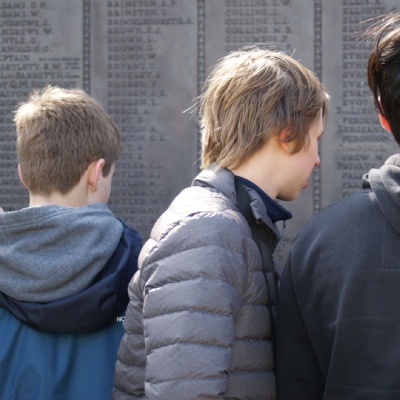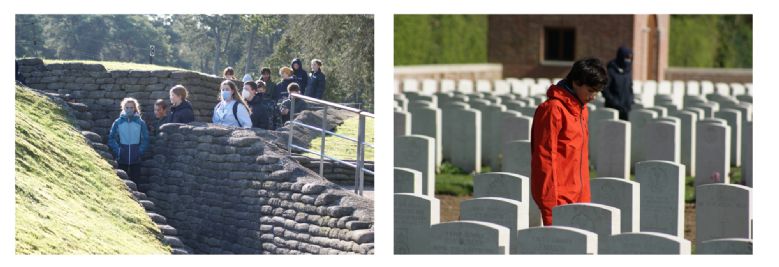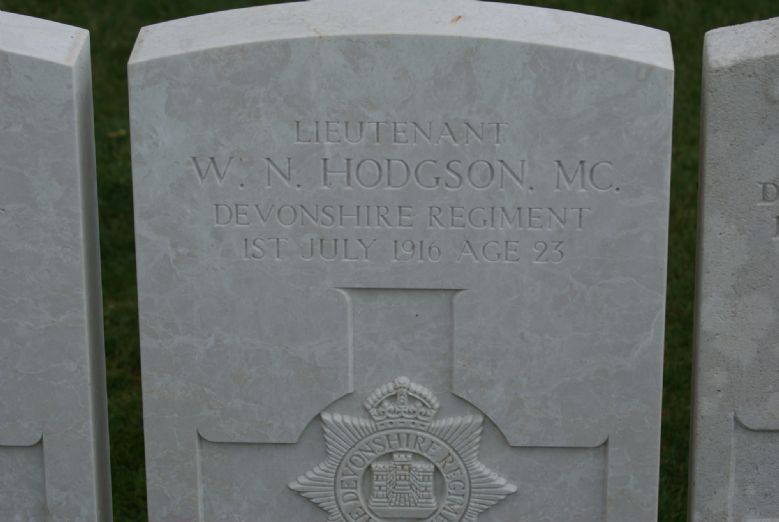We Will Remember Them

Battlefields Tour – Saturday 2nd April 2022
After writing 1,200 words last week about the journey to get to France for our trip to the Battlefields of the First World War, I can now tell you what happened when we finally got there. In the thirty years since I first visited these sites, their power to move and to create a sense of perspective remains undimmed. However, as you might expect over such a long period of time, I found myself this year having some different thoughts about the experience, which I will share in the next couple of weeks as I write up my reflections on the trip.
The weather was mercifully dry for most of the weekend, but the wind that had disrupted the ferries the day before was still blowing strongly and there were a couple of morning snow flurries to remind us that spring was not yet here. Our first stop, at the Canadian National Memorial at Vimy Ridge, one of the highest points in the region, was therefore suitably chilly, though the sunlight on the limestone monument showed it at it best. For what it is worth, I think the Vimy memorial is the most powerful and evocative of all the large-scale monuments on the Western Front, not least the statue of Mother Canada weeping for her lost sons as she looks out over the plains below.

The afternoon was spent on the Somme, where the British army suffered the worst day of its history on 1st July 1916, with nearly 20,000 men killed and another 40,000 wounded. The battle itself lasted nearly five months, producing a few successes and breakthroughs but generally achieving very little progress, and all at the cost of a combined total of nearly a million dead and wounded. The historian Martin Gilbert ended his book on the First World War with these words: ‘All wars end up being reduced to statistics, strategies, debates about their origins and results. These debates about war are important, but not more important than the human story of those who fought in them.’

It is hard to disagree with him when faced with casualty figures that seem so difficult to comprehend, but a visit to the Devonshire Cemetery near Mametz gave the opportunity to tell a human story that I think has the power to turn the statistics into something much more personal. I first learned about what happened here from a documentary about the Battle of the Somme that was made in 1976 to commemorate its sixtieth anniversary – though I did not see it until at least 1990. It was narrated by the Australian actor Leo McKern, probably best known to those of us of a certain age as Rumpole of the Bailey, and it is still available on YouTube. I would recommend it wholeheartedly to those who want to learn more about what happened.

There are 163 soldiers buried in the Devonshire Cemetery, and one of the pupils on our trip counted that 138 of them were killed on 1st July 1916, including the poet William Noel Hodgson, a lieutenant in the Ninth Devonshire Regiment, who was just twenty-three. Before the war, he had been at Christ Church, Oxford – remembered as a scholar, a sportsman and a gentleman. His biography is called ‘The Gentle Poet’ because he was also a creative man. He joined the war, like many others at the time, out of a sense of patriotism, pride and a desire to serve his country, and his nickname among the men he led was Smiler. Hodgson was the bombing officer for his battalion and it was his job to make sure that his men had the ammunition they needed. He was bringing up weapons to the front-line trench when he was hit in the throat by a bullet that day and he was killed instantly.
His last poem was published two days before he died. It is called ‘Before Action’ and it carries an ominous premonition of death, probably because Hodgson was intelligent enough to realise that he and his men were being asked to carry out an impossible mission to capture Mametz, which was well defended by a machine gun post in the village cemetery. Captain Duncan Martin shared Hodgson’s worries, even going as far as to make a model of the valley that lay between the Devonshires and their target to show to his superiors, but his concerns were dismissed like those of so many who dared to question the wisdom of the generals.
The last verse of ‘Before Action’ brings a lump to my throat whenever I read it, but particularly so when I am standing at Hodgson’s grave:
I, that on my familiar hill
Saw with uncomprehending eyes
A hundred of Thy sunsets spill
Their fresh and sanguine sacrifice.
Ere the sun swings his noonday sword
Must say goodbye to all of this.
By all delights that I shall miss,
Help me to die, O Lord.
As you leave the cemetery at Mansel Copse, you see a simple inscription that was first written on a wooden board shortly after the disaster that befell the men, but is now carved in stone at the gateway: ‘The Devonshires held this trench. The Devonshires hold it still.’

A few minutes’ drive away is the Thiepval Memorial to the Missing of the Somme, which is currently being renovated, so it was covered in scaffolding and not accessible to visit properly when we were there. In conversation with the staff at the small museum at the site, it was interesting to hear that we were only the third school group to have visited since the pandemic forced all such trips to be cancelled early in 2020. This was not something to which I had previously given much thought, and it had certainly not occurred to me that we were pioneers in any way, but it was clear from our discussion that they were very pleased to welcome visitors back.
The aesthetic of the brick and marble arch has never really worked for me. I think it has something of the railway viaduct about it, but it is hard not to be moved by the realisation that there are over 70,000 names carved into the structure. These are the men who have no grave, whose bodies were never recovered, and it is probably best not to dwell on why this might have happened. Even nowadays, with our immediate access to accounts and footage of war, we are nevertheless mercifully sheltered from the grim reality of what it must actually be like, and I cannot say that I would wish it any other way.
We ended the day at another memorial to the missing, the Menin Gate at Ypres. This monument has been engraved with nearly 55,000 names – another number that is hard to imagine and appreciate properly. Apart from the years of the Second World War when the Nazis occupied Belgium, the Last Post has been played here every night since July 1928, which is testament to how important the ritual has become, both to local people and to the visitors who come from all over the world to see it.

